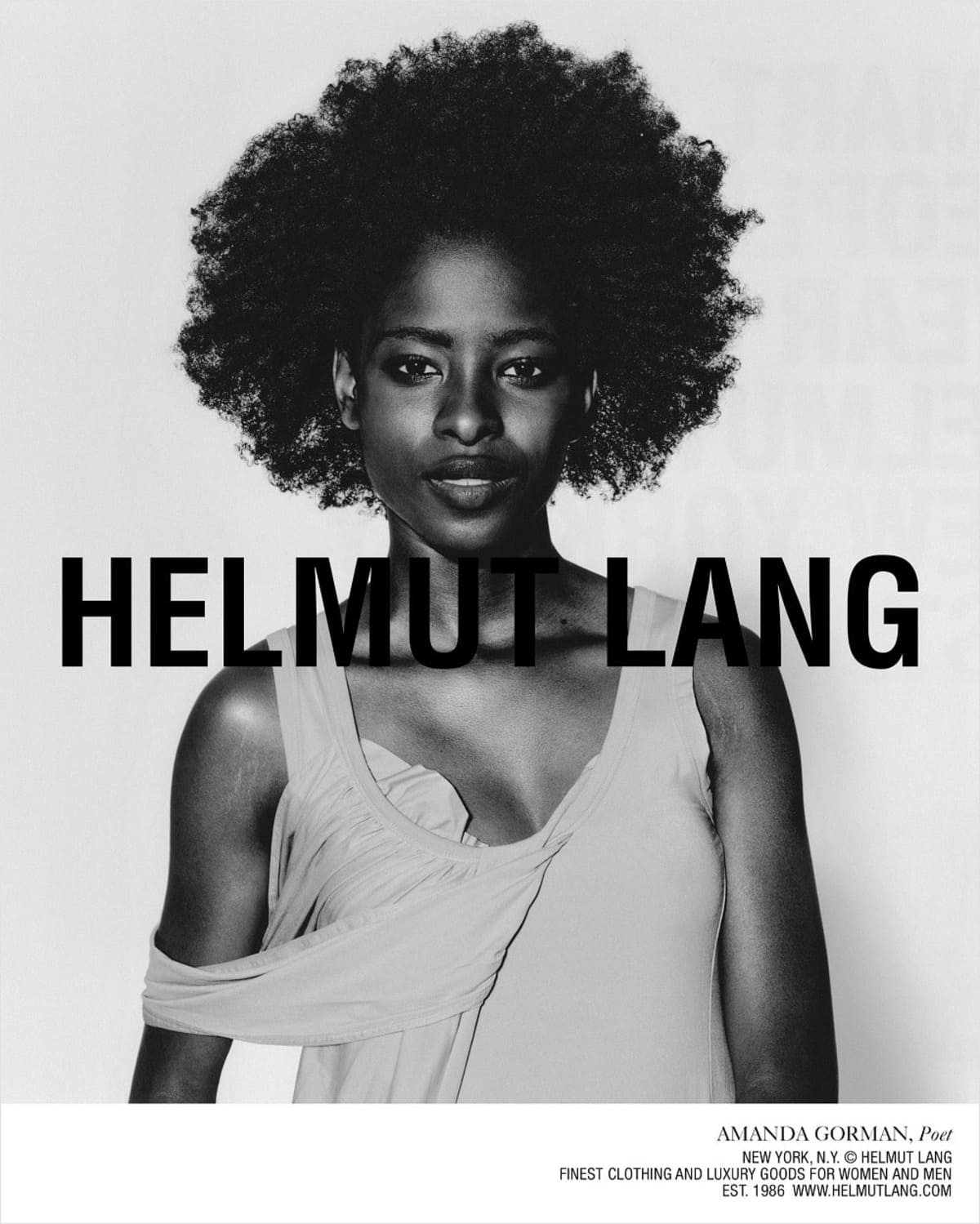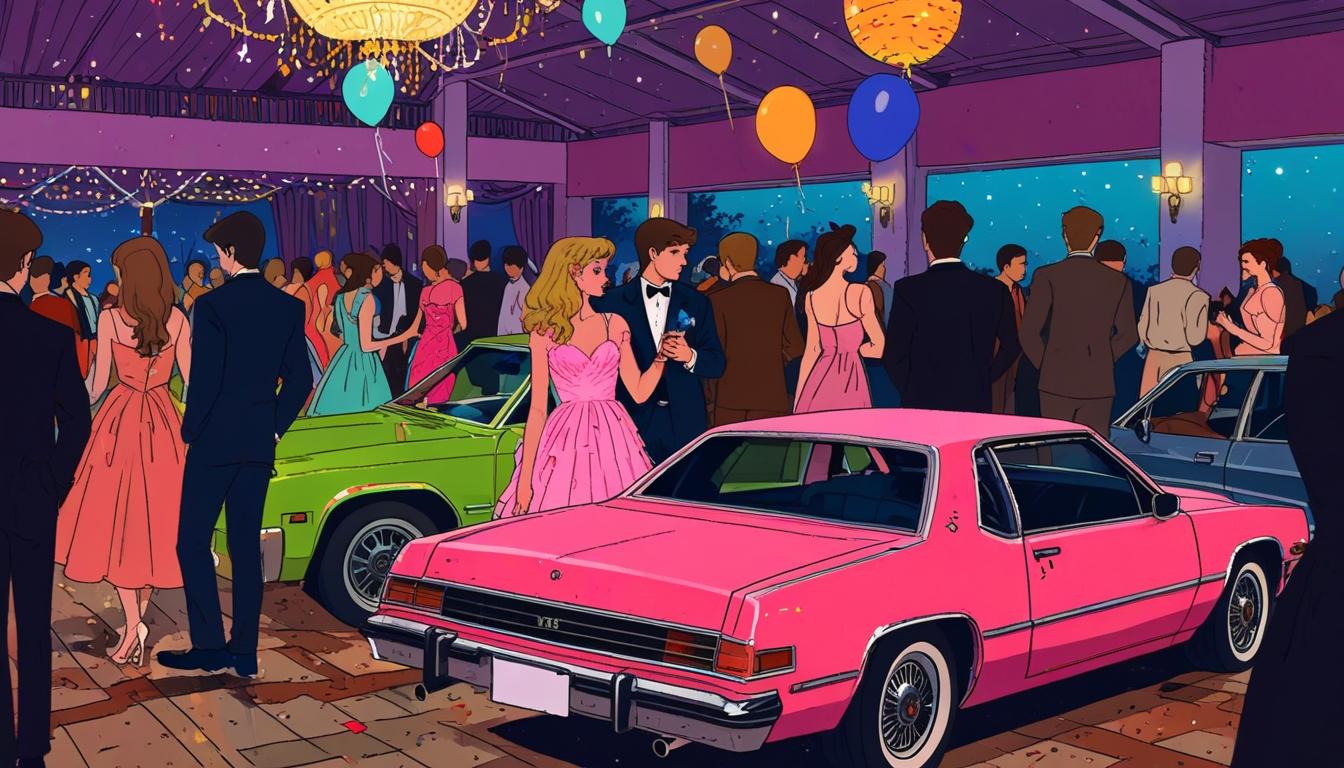Helmut Lang, a self-taught fashion virtuoso, began his journey in the world of fashion with a made-to-measure studio in Vienna in 1977. By the age of 23, Lang had opened his own boutique, gaining traction in Austria before making his significant international debut. His work garnered attention at the Centre Pompidou in Paris, part of the Austrian government-initiated exhibition “l’Apocalypse Joyeuse.” This pivotal moment led to the establishment of the Helmut Lang label in 1986, marking the beginning of a brand known for its stark minimalism and avant-garde sensibilities.
The late 1980s and early 1990s saw minimalist fashion reaching its zenith, and Lang’s designs perfectly encapsulated the era’s ethos. With a focus on sharp lines, precise cuts, and the use of high-quality, often innovative fabrics, Lang’s collections stood out for their understated elegance. His work drew comparisons to fashion icons like Rei Kawakubo and Yohji Yamamoto for its intellectual and occasionally austere aesthetic. Lang’s reputation grew with his signature slim suits, denim collections, and high-tech materials, solidifying his place in the high fashion echelon.
In 1997, Lang relocated to New York, shifting his company’s headquarters to SoHo and continuing to innovate within the industry. He was a pioneer in using the internet for fashion show broadcasts and advertising on New York taxi tops, which redefined how fashion brands engaged with the public. Lang’s influence extended beyond his own designs; his decision to showcase collections ahead of New York Fashion Week led to a permanent rescheduling of the event, influencing the broader fashion calendar. Despite his departure from the brand in 2005, Helmut Lang’s legacy endures, with the label continuing to evolve under new creative directions while maintaining the minimalist and modernist principles that Lang championed.
Helmut Lang 1990s Winter Runway
How to tell if Helmut Lang is vintage from the logo
Helmut Lang, known for its minimalist and avant-garde designs, has maintained a consistent brand image since its inception. The logo is a key element in identifying vintage Helmut Lang pieces. By examining the logo, you can determine the era of the item and ensure its authenticity.
1986 to now Helmut Lang logo
- The Helmut Lang logo introduced in 1986 is characterized by its simple and bold typography.
- The text is in all capital letters, using a sans-serif font that emphasizes a modern and minimalist aesthetic.
- This logo has remained consistent in its design, reflecting the brand’s dedication to minimalism and modernism.
- The font is bold, and the spacing between the letters is uniform, giving it a clean and sharp appearance.
- Over the years, this logo has become iconic and is instantly recognizable as a symbol of the brand’s high fashion status.

1986 to now Helmut Lang logo
How to tell if Helmut Lang is vintage from the tags
Helmut Lang has undergone significant changes in its branding and tag design over the decades. Identifying vintage Helmut Lang clothing by its tags can provide insights into the era of production, with each period reflecting specific design choices and materials.
Struggling with vintage tags or labels? Upload a picture on our vintage tag identification page, and we’ll help you out!
1980s vintage Helmut Lang tags
- Tags from this era often feature minimalistic design.
- Text-based tags with simple “Helmut Lang” branding.
- Some tags include the location “Vienna,” indicating the brand’s origin.
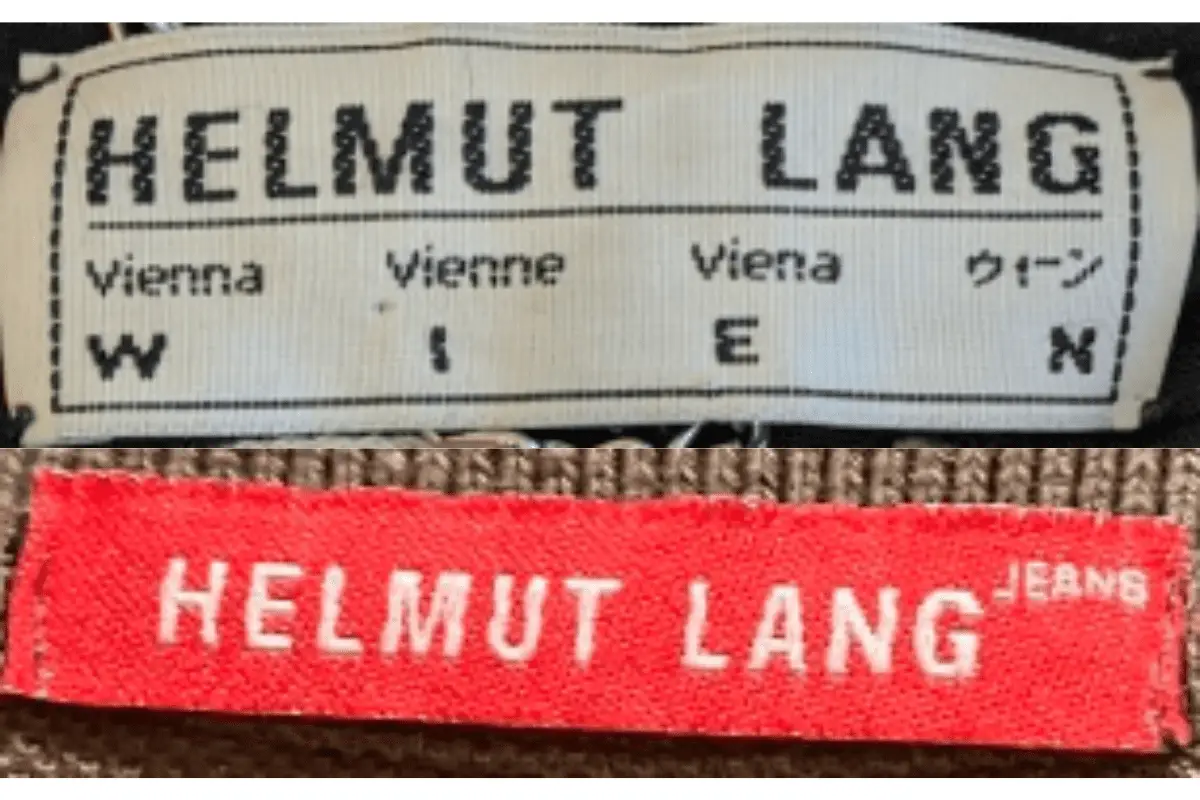
1980s Helmut Lang tags
1990s vintage Helmut Lang tags
- Introduction of more detailed and stylized tags.
- Tags often include additional information such as “Produced in 1998.”
- Utilization of a mix of materials, including fabric and embroidered tags.
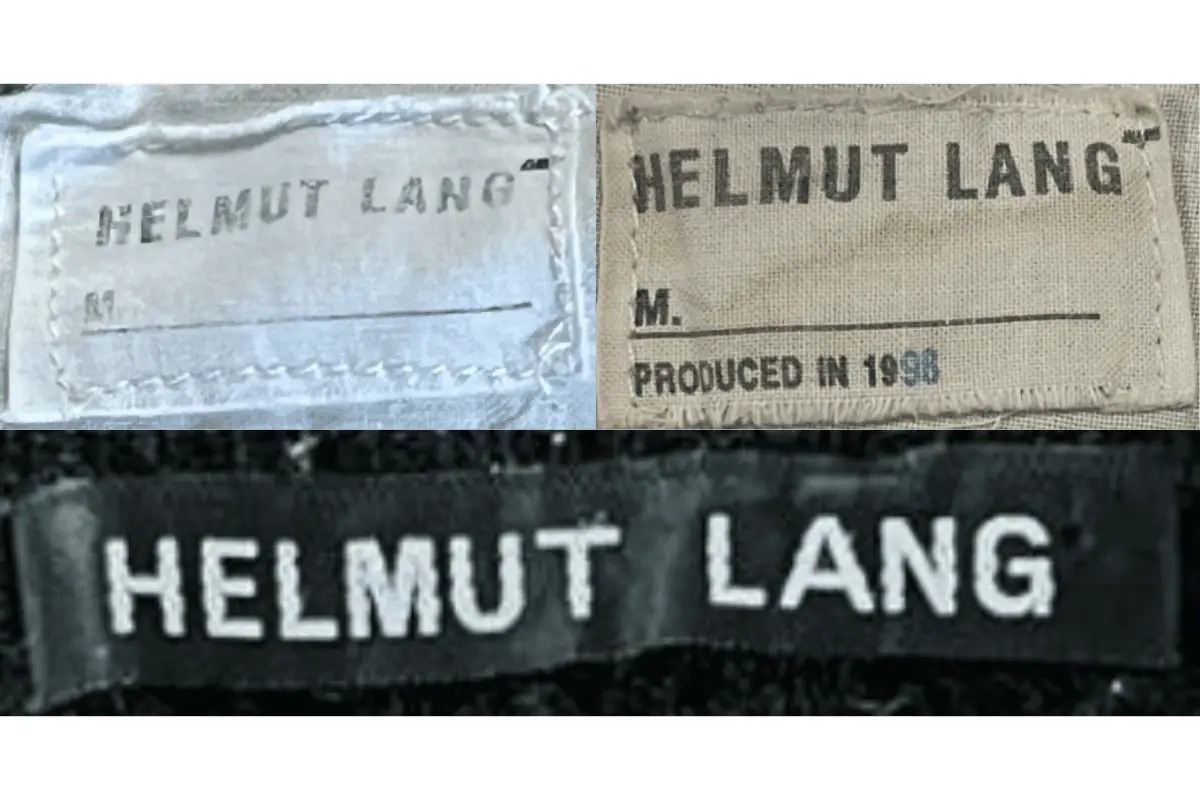
1990s Helmut Lang tags
2000s vintage Helmut Lang tags
- Tags become more varied in design and materials.
- Introduction of re-edition tags, reflecting a nod to past collections.
- Continued use of clear, bold branding, with some tags indicating production locations like Portugal.
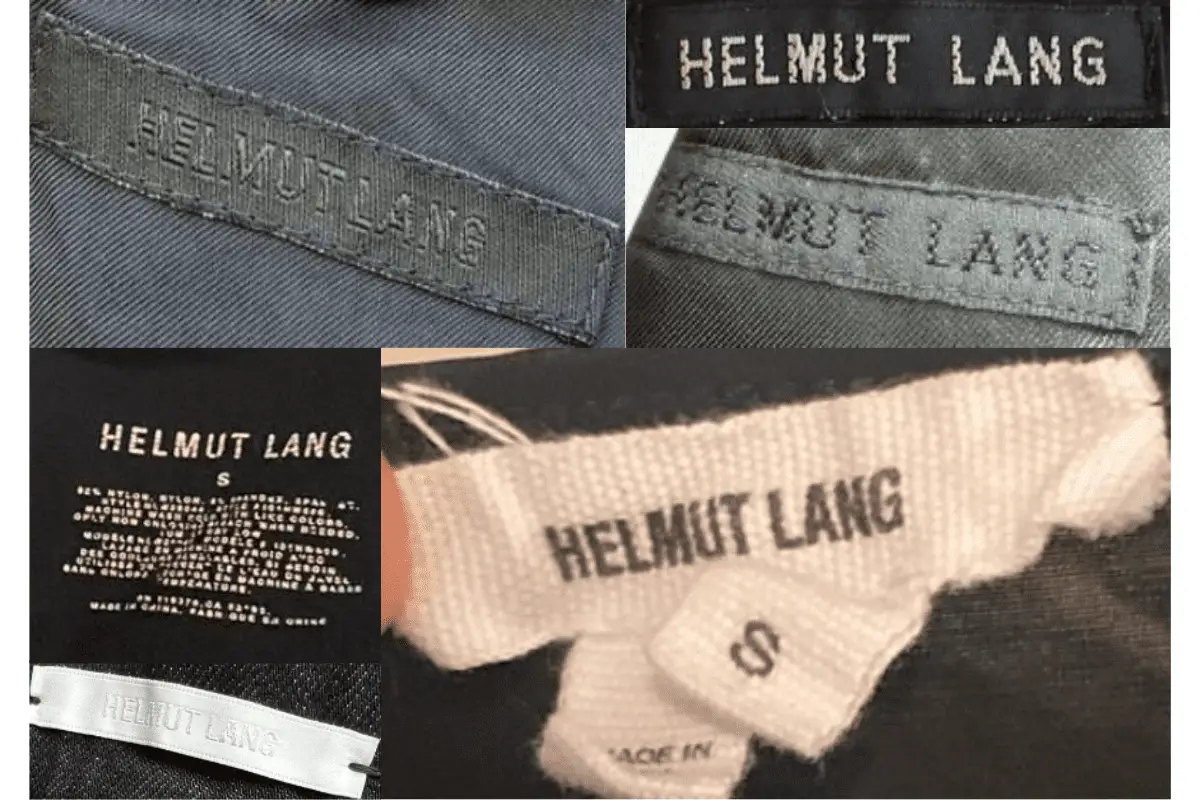
2000s Helmut Lang tags
2010s vintage Helmut Lang tags
- Modernized tag designs, often with a cleaner, streamlined look.
- Increased variety in tag layouts and colors.
- Tags may include detailed product information and collaboration notes, as seen in tags from designer collaborations.
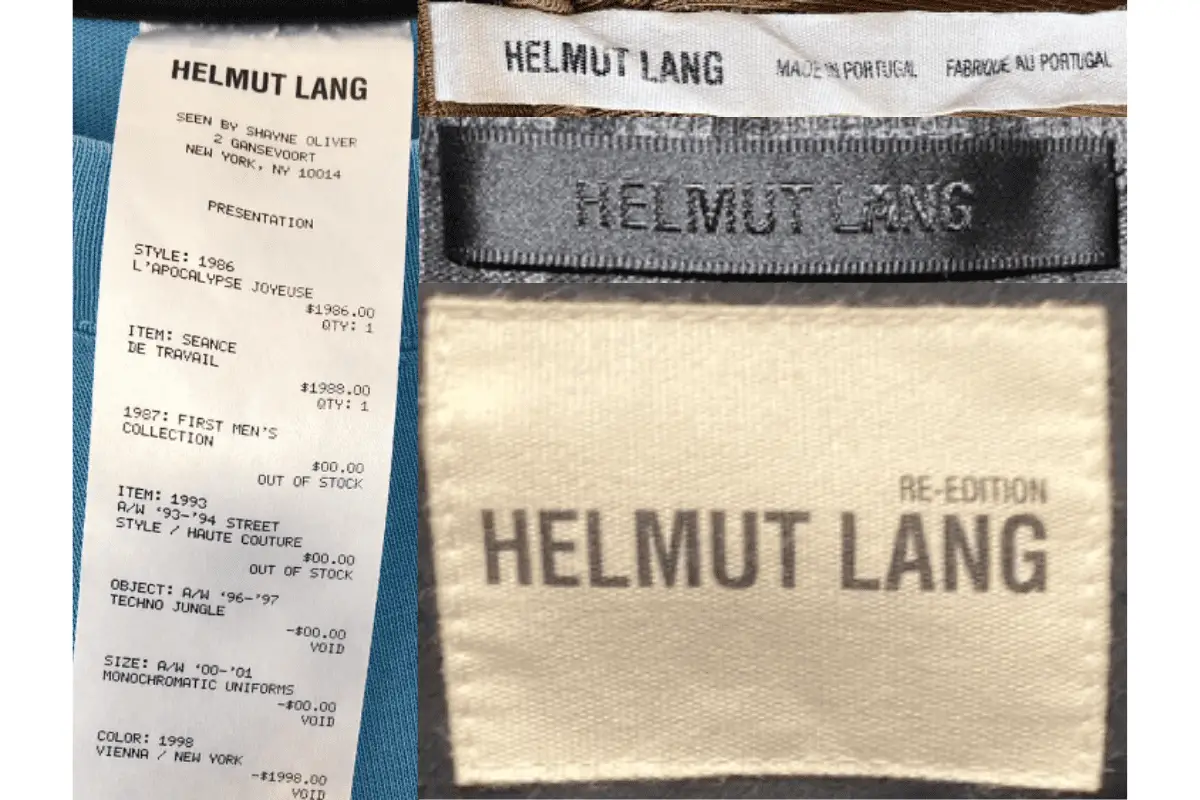
2010s Helmut Lang tags
